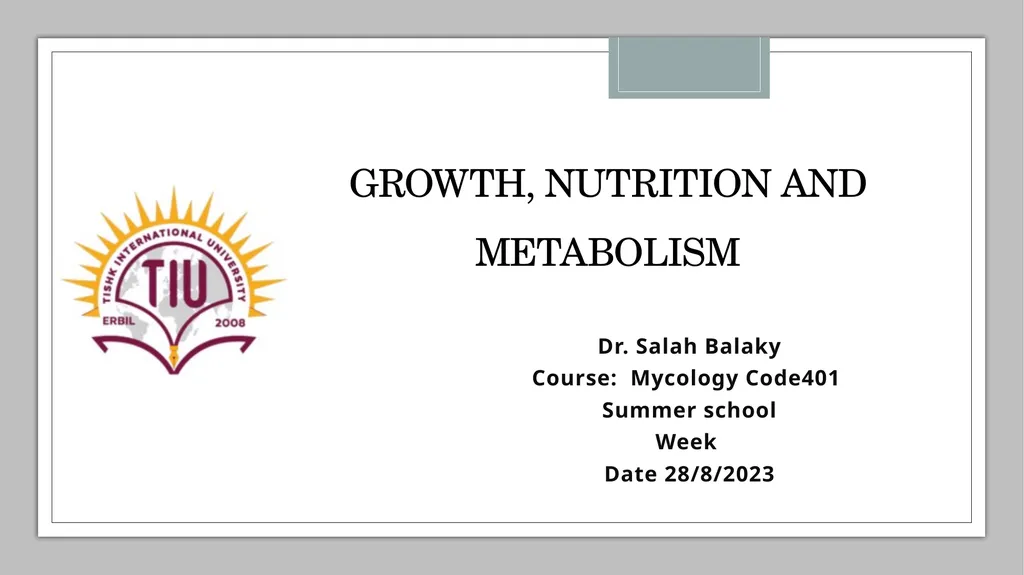Growth, Nutrition and Metabolism Dr. Salah Balaky
Author : tatiana-dople | Published Date : 2025-08-16
Description: Growth Nutrition and Metabolism Dr Salah Balaky Course Mycology Code401 Summer school Week Date 2882023 Growth Under favorable environmental conditions fungal spores germinate and form hyphae During this process the spore absorbs
Presentation Embed Code
Download Presentation
Download
Presentation The PPT/PDF document
"Growth, Nutrition and Metabolism Dr. Salah Balaky" is the property of its rightful owner.
Permission is granted to download and print the materials on this website for personal, non-commercial use only,
and to display it on your personal computer provided you do not modify the materials and that you retain all
copyright notices contained in the materials. By downloading content from our website, you accept the terms of
this agreement.
Transcript:Growth, Nutrition and Metabolism Dr. Salah Balaky:
Growth, Nutrition and Metabolism Dr. Salah Balaky Course: Mycology Code401 Summer school Week Date 28/8/2023 Growth Under favorable environmental conditions, fungal spores germinate and form hyphae. During this process, the spore absorbs water through its wall, the cytoplasm becomes activated, nuclear division takes place, and more cytoplasm is synthesized. The wall initially grows as a spherical structure. Once polarity is established, a hyphal apex forms, and from the wall of the spore a germ tube bulges out, enveloped by a wall of its own that is formed as the germ tube grows. Mushroom life cycle There are four basic stages to the life cycle of a mushroom: Spore germination. Colonisation. Fruiting. Sporulation. Spore germination Like a plant seed, a mushroom spore germinates (sprouts) when the environmental conditions are right. Usually, this involves high humidity, plus a favourable temperature for that particular species. When the spore germinates, a strand of mycelium emerges from it. The strands of mycelium spreads through a substrate, gathering water and nutrients, to be able to produce fruiting bodies (mushrooms). Colonisation This process of mycelium spreading through a substrate is called colonisation. Mycelium slowly spreads through its substrate, trying to colonise as much area as possible. The more substrate that a single body of mycelium has colonised, the greater its access to nutrients, and therefore the greater its capacity to produce lots and lots of fruiting bodies (mushrooms) to continue to produce spores and procreate. Fruiting Once the body of mycelium has gained access to enough nutrients, certain environmental conditions will trigger the formation of fruiting bodies, better known as mushrooms. These environmental conditions vary from species to species, but commonly involve high humidity and a slight drop in temperature, which is one reason why mushrooms are the most abundant in autumn. Mushroom fruit body starts to grow, which is called hyphal knot. This is when the individual strands of hyphae bundle together and prepare to grow a mushroom. Sporulation As the mushroom fruit body matures, gills (or pores in some cases) begin to become visible on the underside of the mushroom. Some mushrooms have a ‘veil’ or a ring around the stem protecting the gills during early growth. But eventually as the cap of the mushroom grows, the gills become exposed and begin to release spores. Spores Spores are so small that they are easily carried away in air currents, and once airborne they are capable














